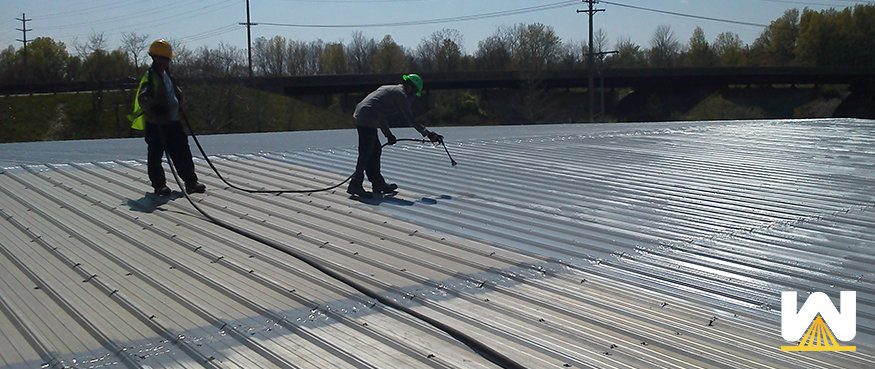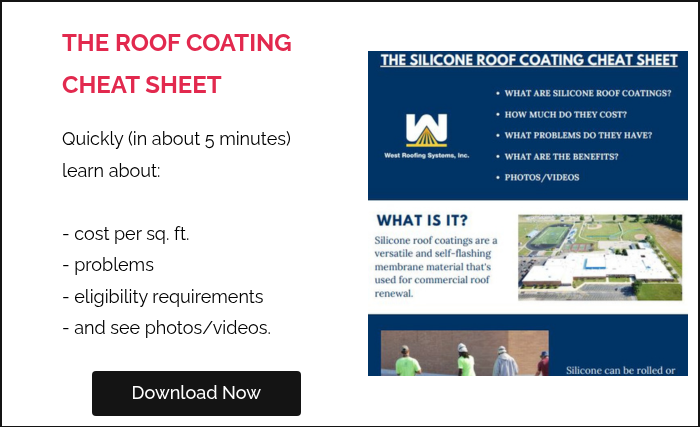Elastomeric coatings are used in commercial roofing as a paint-like liquid that gets applied on top of an existing roofing system to form a membrane. They also make the roof:
- waterproof
- a monolithic layer
- hold less heat by adding an element of reflectivity from the sun
- have an extended life
- have a 10-20-year warranty
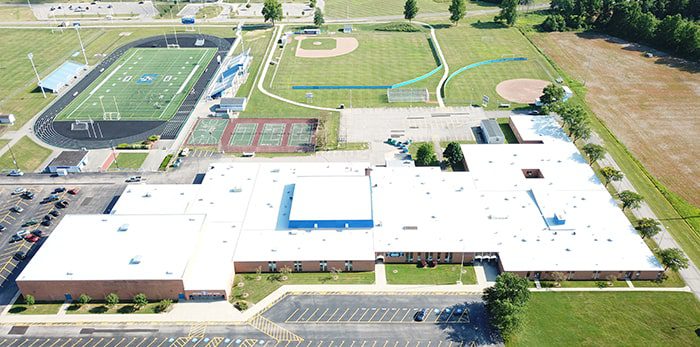
Usually, an elastomeric roof coating comes in white to reduce roof temperature. In some territories, such as colder climates in Ohio, a grey color can be used to absorb heat during the winter months.
This article will discuss elastomeric roof coatings, including benefits, different types, and the best time to consider installing them.
What are the three types of elastomeric coatings?
The three most popular types of elastomeric coatings are acrylic, silicone, and urethane.
Acrylic – water-based coating that’s only applied to roofs with a slope. Suppose an acrylic roof has standing water (meaning the water just sits there and does not run off the roof). In that case, the standing water will cause the reversion of the coating back to a fluid and eventually wash right off your roof.
Acrylics are typically 52% solids by volume and 48% water, so when it’s applied, almost half of the product is lost through evaporation. Although cheaper than other elastomeric coatings, you’ll need to use much more material to account for what’s lost during evaporation.
Silicone – is a silicone resin-based coating that’s 96% solids/4% carrier. This means 96% of what goes down will stay on your roof. Silicones perform great on flat roofs because they can withstand ponding water. Silicones are a middle-of-the-road coating in terms of performance and price.
Silicones are twice as resistant to weathering as acrylics but are also more expensive.
Urethane – urethanes have the most impact resistance of any elastomeric roof coating. However, urethanes are expensive compared to the other two and do not hold up to standing water very well.
What are the costs of elastomeric roof coatings?
- An acrylic roof coating costs around $14-$21 per gallon.
- A silicone roof coating costs around $27-$35 per gallon.
- A urethane roof coating costs around $40-$65 per gallon.
NOTE: These prices are from the year 2020. As of December 2024, prices have greatly increased.
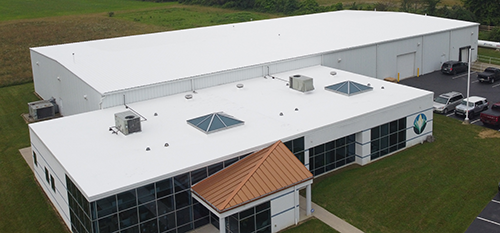
Why do building owners install elastomeric roof coatings?
Elastomeric roof coatings are an attractive roofing option for many reasons, such as:
- It’s more cost-effective than completely tearing off your existing roof
- The white color will add reflectivity, which will lower energy costs
- The warranty is renewable, making forecasting future roofing costs accurate
- It’s a fast installation
- It seals leaks and makes your roof a monolithic layer of waterproofing
- It provides the building owner with a new 10-20-year warranty
- It’s considered maintenance and/or repair and doesn’t count as another roofing system
A building can only have two roofs installed per building code.
When should a building owner consider installing an elastomeric roof coating?
The best time to install an elastomeric coating over your existing roof is before your roof begins having significant performance issues.
By issues, we mean small leaks, flashings showing signs of wear and tear, or your rubber seams beginning to loosen.
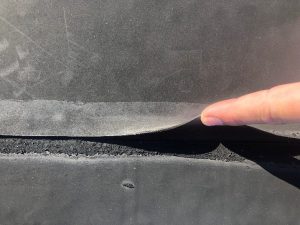
A good example would be a rubber roof with a 10-year warranty. Once the warranty runs out, and it’s year 11, chances are the rubber roof is still in excellent shape.
This would be a great time to install a coating because there’s probably very little moisture under the seams. A roofing contractor can clean the roof, treat the seams, and then install coating over the roof field.
By eliminating the need to remove any saturated areas of the roof, the project cost will be much lower than it would be a few years from now, when the roof is in worse condition.
NOTE: on average, a roof with 25% or less moisture can receive an elastomeric roof coating for around $3-7 per square foot. For a roof with 25% or more saturation, it will be more cost-effective to completely tear the roof off and install a new roof, which will cost at least $10 per square foot.
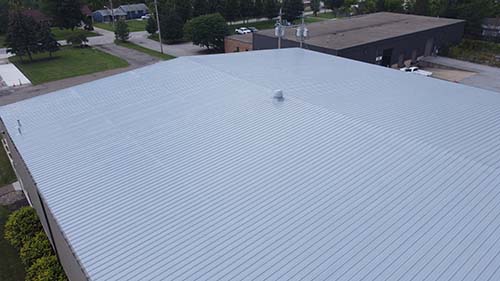
What happens when a building owner contacts a roofing contractor about an elastomeric roof coating?
The first thing a roofing contractor will want to know is the history of the roof:
- Does the building have any leaks?
- How old is the roof?
- What roofing system is currently installed?
- How many levels does the roof have?
- What is the approximate square footage of the roof?
Once a roofing contractor knows this information, they will schedule a site visit and perform a roof inspection free of charge.
A roofing contractor can tell if there’s any saturation in the roof by noticing a bungee or soft presence when walking the roof.
Another way is through an infrared survey.
After the inspection, there will be a caveat in the proposal. The proposal states that after performing an infrared survey, those areas will be removed and replaced with matching materials before the elastomeric coating can be applied.
NOTE: For proper adhesion and performance, coating should NEVER, NEVER, NEVER be installed over saturated insulation or substrates.
A roofing contractor will explain the infrared survey’s findings and give the building owner options (and recommendations).
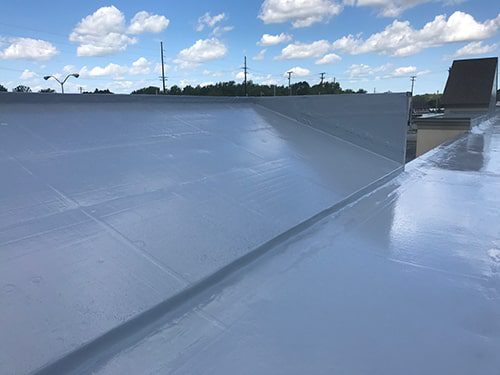
Other popular questions about roof coating systems
- What’s The Cost Of A Silicone Roof Coating System?
- 6 Problems Roof Coating Systems Have
- A Comparison: Single-Ply Vs. Metal Vs. Spray Foam Vs. Roof Coating Systems

